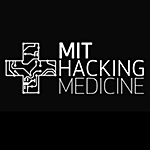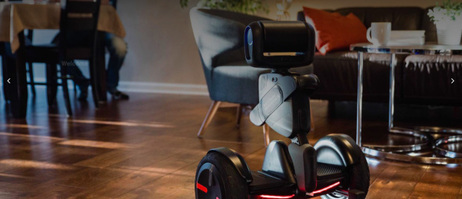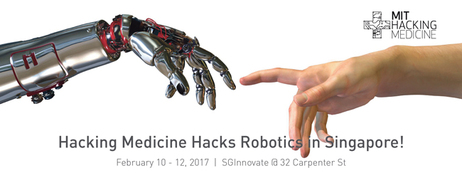Hackathon to Find Ways to Use Robots to Address Elderly Healthcare Needs
Published Mar-06-17Breakthrough:
An autonomous robot that will transport elderly patients and residents of nursing homes to their various activities, such as medical appointments.
Company:
Segway Robotics/MIT, Singapore
The Story:
 So you’ve got a technical challenge you need solving or you want some fresh thinking applied to one of your products. What’s more, you’d like the answers quickly: what can you do? How about getting a bunch of really smart people together to compete in teams to invent a solution?
So you’ve got a technical challenge you need solving or you want some fresh thinking applied to one of your products. What’s more, you’d like the answers quickly: what can you do? How about getting a bunch of really smart people together to compete in teams to invent a solution? Segway Robotics and MIT did just that with the MIT Hacking Medicine Robotics hackathon in Singapore. The purpose was to devise new ways of using Segway's Loomo bot to address elderly and medical care challenges in the country, where the population is aging rapidly. The number of individuals over the age of 65 is expected to triple in the next 15 years.
This was the first such hackathon in Singapore to address unmet needs in elderly care and medicine and how robotics can be of benefit.
“MIT Hacking Medicine Robotics Singapore 2017 demonstrates how we convene, energize and teach a global community to collaboratively innovate solutions for some of the most critical healthcare challenges, particularly in elderly care,” said Khalil Ramadi, Co-Director of MIT Hacking Medicine.
Meet Loomo
Loomo is Segway’s first robot and it combines a domestic bot with a Segway personal transport. It has autonomous capabilities and self-balancing, features a variety of connection technologies and is equipped with a camera and other tools for navigation.
Team Problem Solving
The hackathon took place over three days in early February 2017, and each team was comprised of three developers, a healthcare professional and a business manager. In total, there were twelve teams and 83 participants at the open innovation event.
The winning team devised a Segway robotic concept called Botler. Its aim is to build an autonomous system that will transport elderly patients and nursing home residents to where they need to go. Face recognition algorithms identify patients and connects to their wheelchair via a custom designed electromagnetic coupling. This allows wheelchair bound individuals to be easily transported from A to B, such as attending their medical appointments and meal times. One of the benefits of having a Botler is that it can free up manpower allowing medical and welfare staff to devote more of their time to providing care.
In second place was Team Dori for a personalized social robot that can monitor cognitive health. Team NOW came in third with a robotic nurse-on-wheels (NOW) that can detect, diagnose, alert and manage cardiac events.
Future Developments
The winning team picked up a check for $5,000 and all three top teams will be given access to Segway’s prototyping facility labs.
“My team and I shared a collective vision to transform regular everyday mobility for the elderly into an autonomous smart system, leveraging the convenience of the Loomo platform,” commented Kok Yuan Yik, Roboticist and Botler team leader.
“We hope to be able to deploy our solution among the elderly and aim to work closely with SGInnovate to develop Botler further.”
Next Story »


